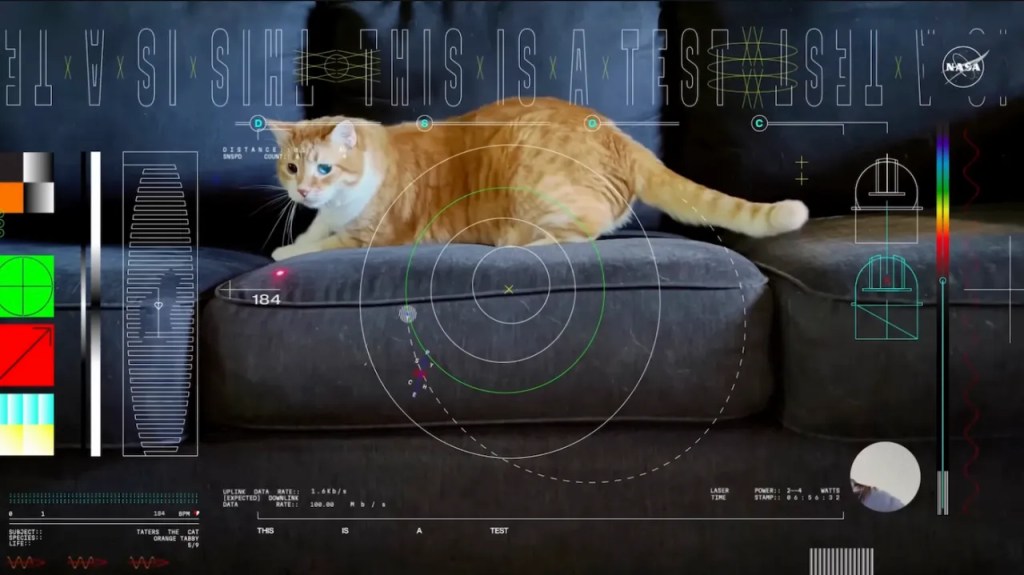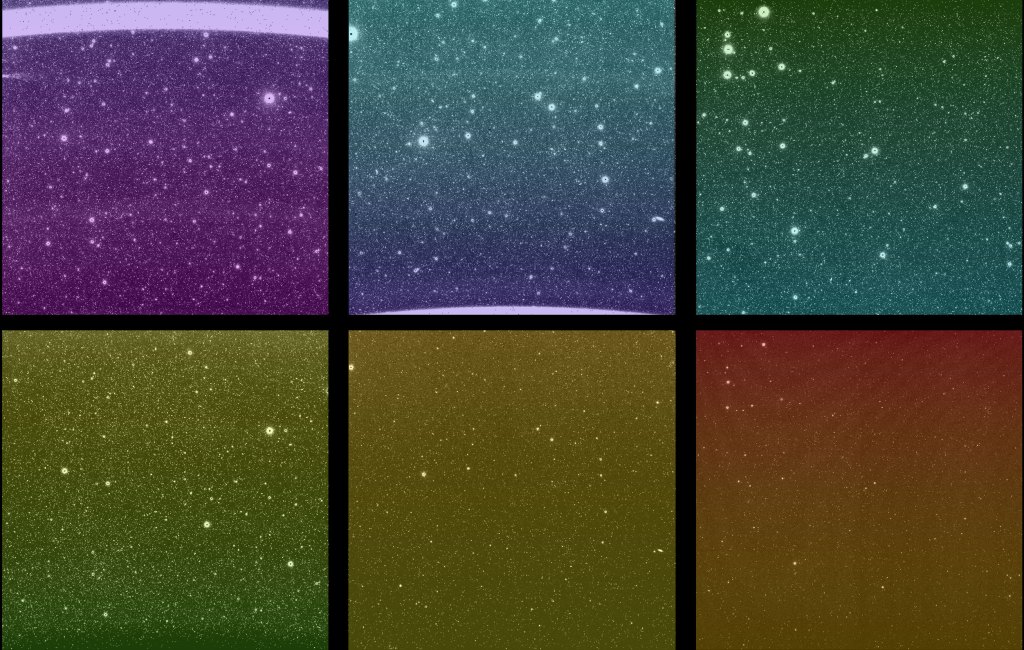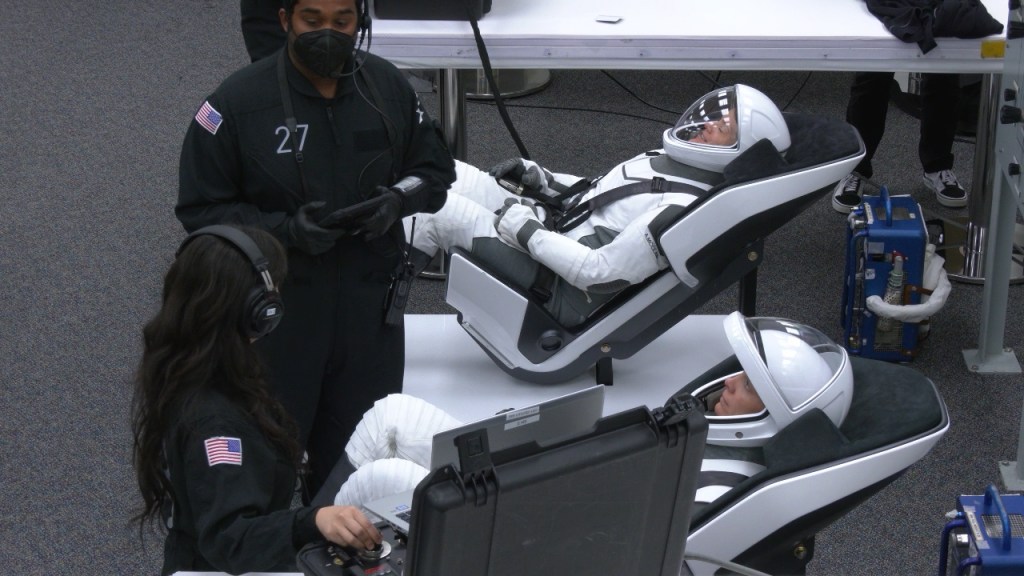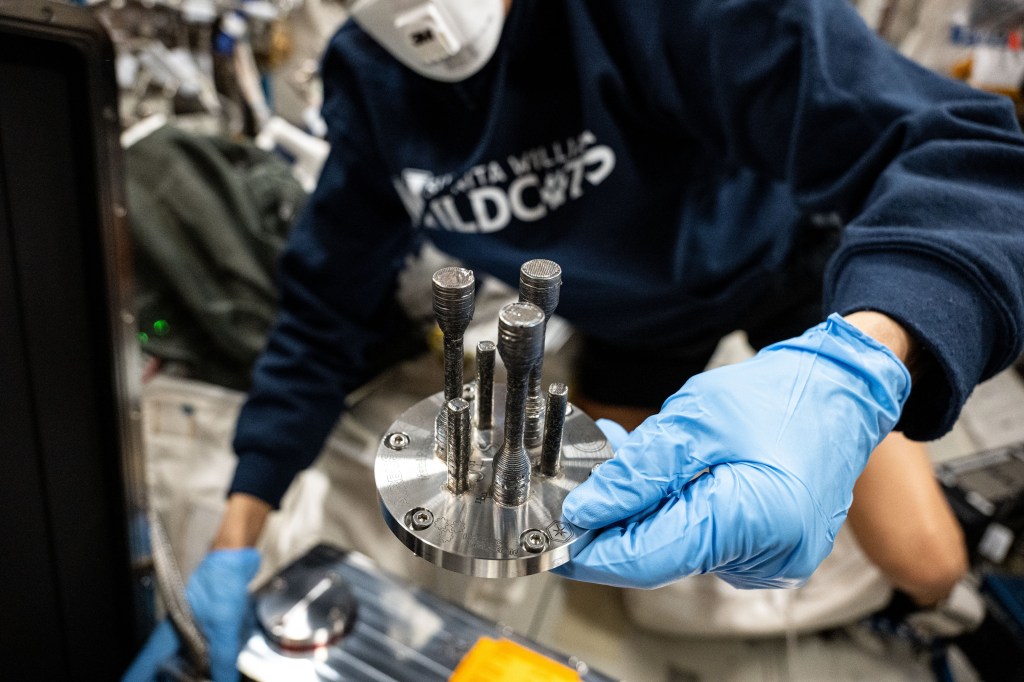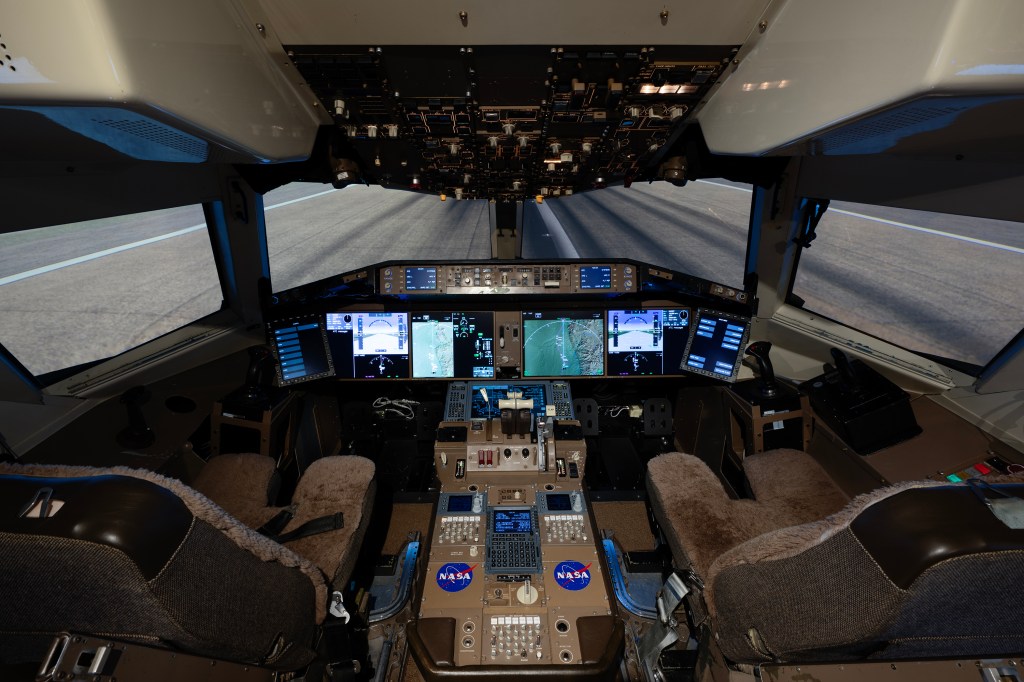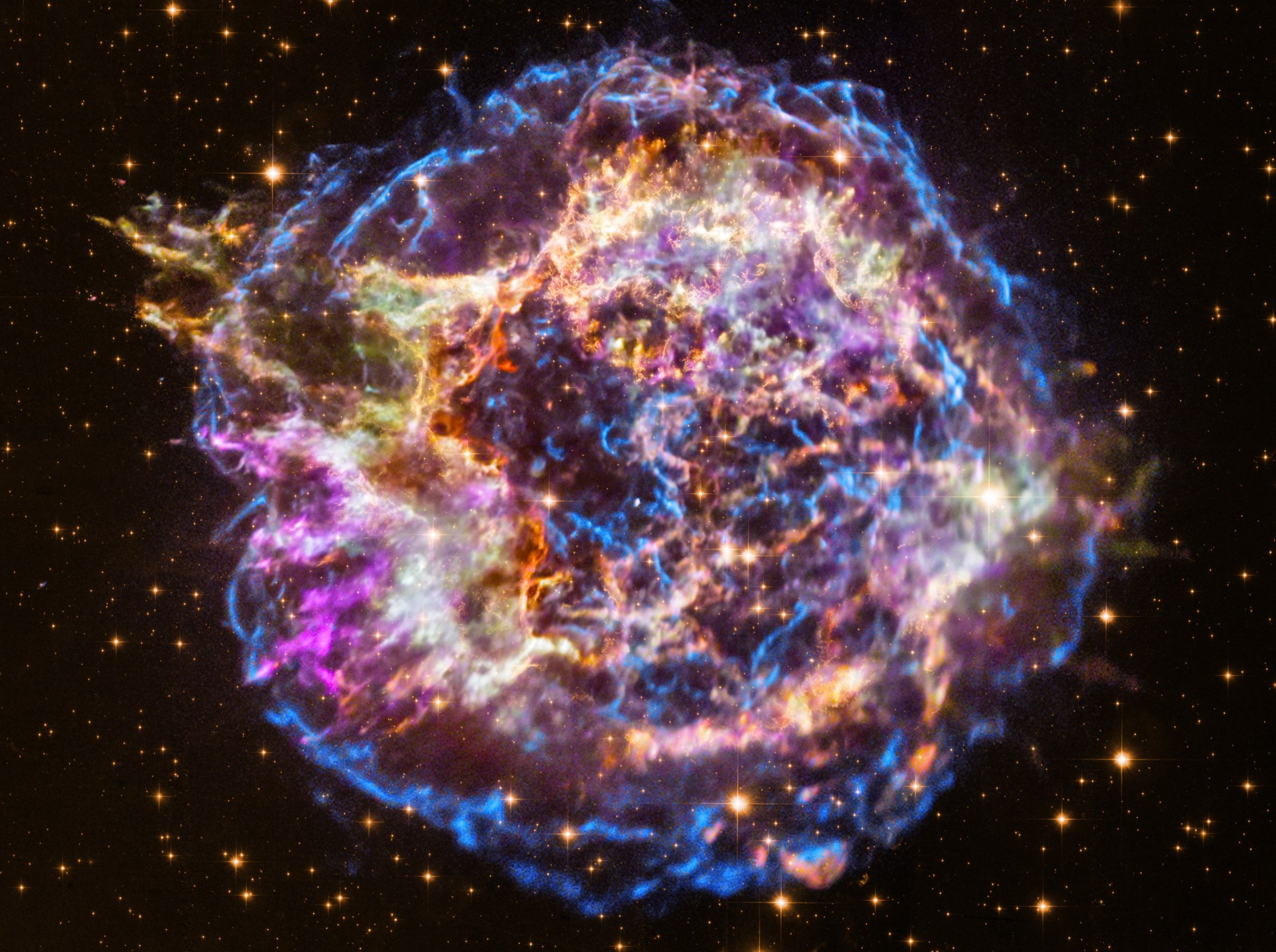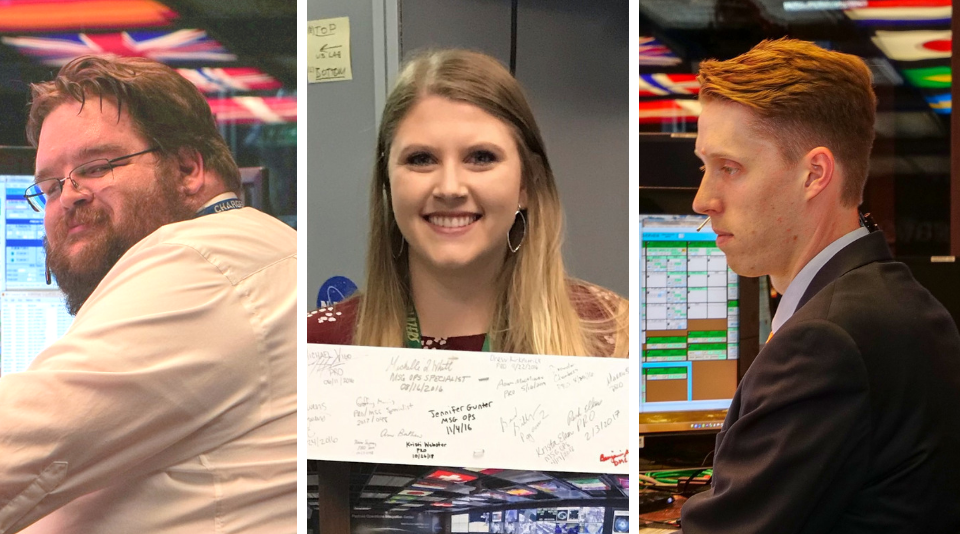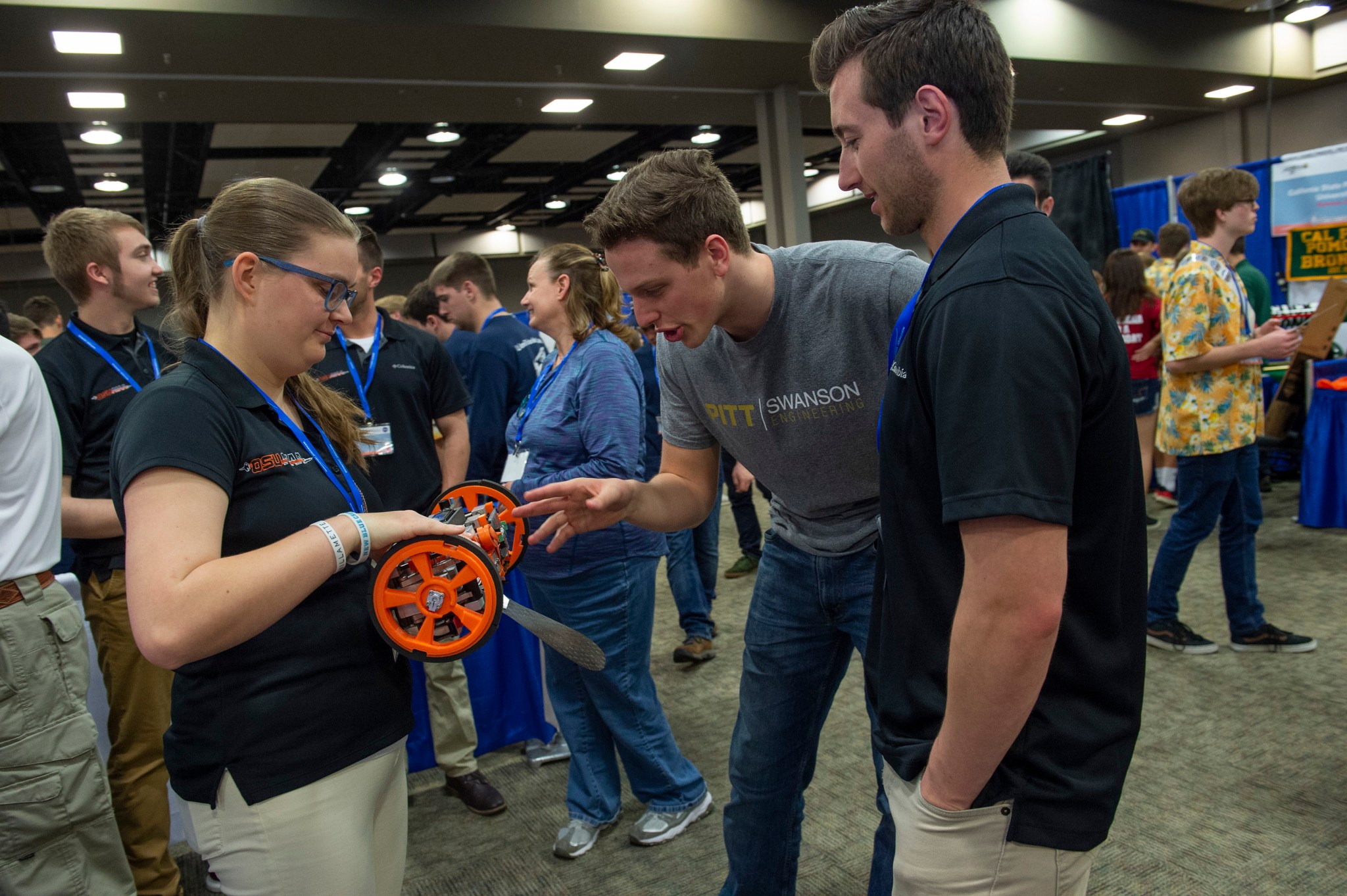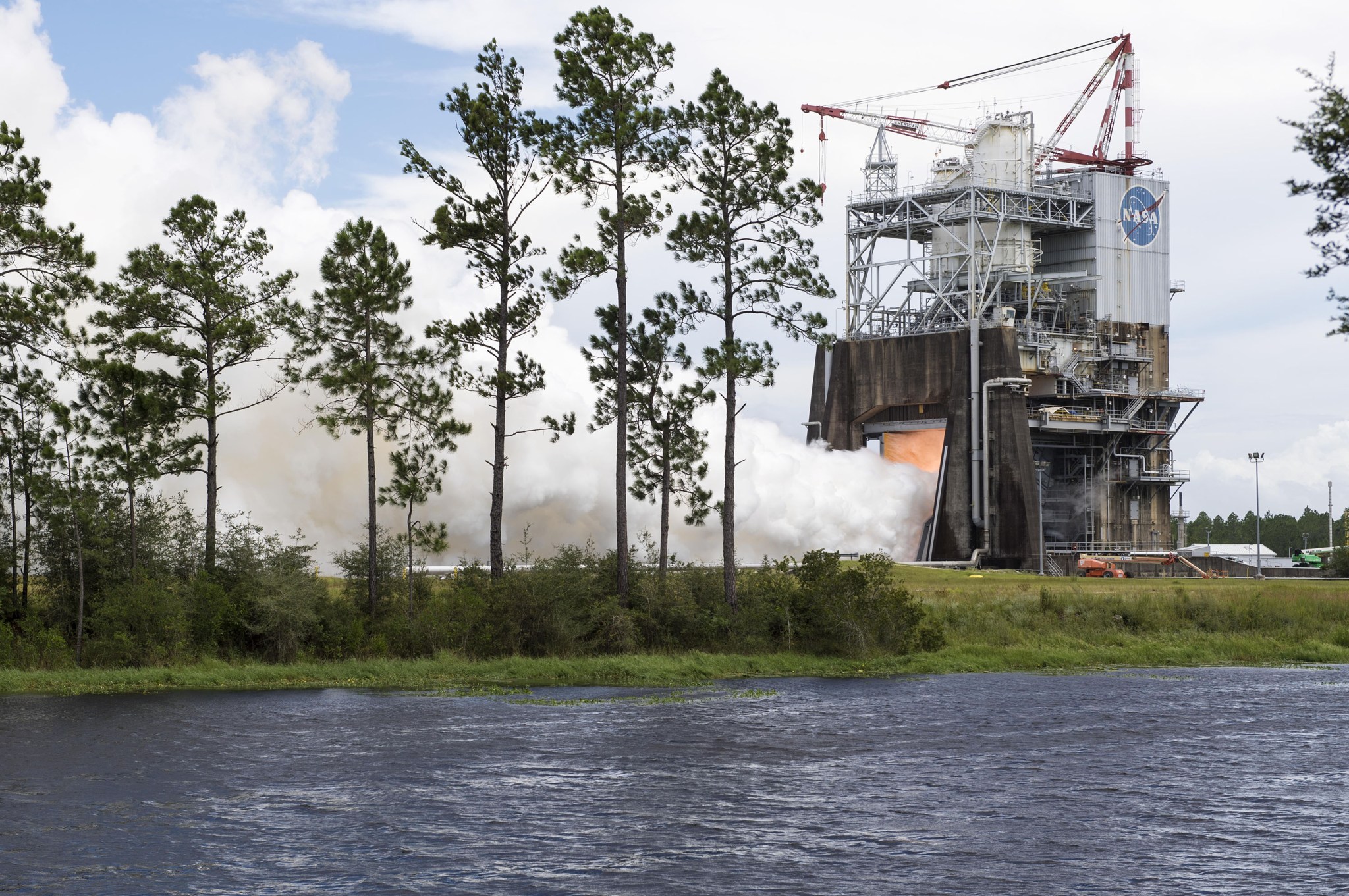In This Week’s Star
- The Latest Look at ‘First Light’ from Chandra
- All Booster Segments for NASA’s Artemis 2 Mission Completely Cast
- NASA Stennis Uses SLS Core Stage Pathfinder to Prepare for Green Run Test Series
- Payload Operations Integration Center Reshaping Workforce
- Competition Open: New Challenges Await 2019-20 NASA Student Launch Teams
- NASA, Peanuts Partnership Featured in Special Space-Themed Collection
- This Week in NASA History: 5th RS-25 Flight Controller Hot-Fire – Aug. 30, 2017
The Latest Look at ‘First Light’ from Chandra
NASA’s Chandra X-ray Observatory has captured images of cosmic phenomena over two decades of operations, but perhaps its most iconic is the supernova remnant Cassiopeia A.
Located about 11,000 light-years from Earth, Cas A — as it’s nicknamed — is the glowing debris field left behind after a massive star exploded. When the star ran out of fuel, it collapsed onto itself and burst as a supernova, possibly briefly becoming one of the brightest objects in the sky.
The shock waves from this blast supercharged the stellar wreckage and its environment making the debris glow in X-rays. Shortly after Chandra — which is managed by NASA’s Marshall Space Flight Center — launched aboard the space shuttle Columbia on July 23, 1999, astronomers directed the observatory to point toward Cas A.
Featured in Chandra’s “First Light” image release on Aug. 26, 1999, Cas A marked a seminal moment for both the observatory and the field of X-ray astronomy. Near the center of the intricate pattern of the expanding debris from the shattered star, the image revealed, for the first time, a neutron star that the supernova left behind.
Chandra has since repeatedly returned to Cas A to learn more. A new video showing the evolution of Cas A from 2000 to 2013 portrays gas — around 20 million degrees Fahrenheit — in the remnant expanding outward. These X-ray data, combined with data from NASA’s Hubble Space Telescope, show delicate filamentary structures of cooler gases around 20,000 degrees Fahrenheit. Hubble data from a single time period are shown to emphasize the changes in the Chandra data.
The blue, outer region of Cas A shows the expanding blast wave of the explosion. Composed of shock waves, the blast wave is similar to the sonic booms generated by a supersonic aircraft. These expanding shock waves produce X-ray emission and are sites where particles are being accelerated to energies that reach about two times higher than the most powerful accelerator on Earth, the Large Hadron Collider. As the blast wave travels outward at speeds of about 11 million mph, it encounters surrounding material and slows down, generating a second shock wave — called a “reverse shock” — that travels backward.
These reverse shocks are usually observed to be faint and much slower moving than the blast wave. However, a team of astronomers led by Toshiki Sato from RIKEN in Saitama, Japan, and NASA’s Goddard Space Flight Center, has reported reverse shocks in Cas A that appear bright and have speeds between about 5 and 9 million mph. These unusual reverse shocks are likely caused by the blast wave encountering clumps of material surrounding the remnant, as Sato and team discuss in their 2018 study. This causes the blast wave to slow down more quickly, which reenergizes the reverse shock making it brighter and faster. Particles are also accelerated to colossal energies by these inward moving shocks, reaching about 30 times the energies of the Large Hadron Collider.
Scientists also created a historical record in optical light of Cas A using photographic plates from the Palomar Observatory from 1951 and 1989 that had been digitized by the Digital Access to a Sky Century @ Harvard program, located at the Harvard-Smithsonian Center for Astrophysics. These were combined with images taken by Hubble between 2000 and 2011. This long-term look at Cas A allowed astronomers Dan Patnaude and Robert Fesen to learn more about the physics of the explosion and the resulting remnant from both the X-ray and optical data.
This recent study of Cas A adds to a long collection of Chandra discoveries over the course of the telescope’s 20 years. In addition to finding the central neutron star, Chandra data have revealed the distribution of elements essential for life ejected by the explosion, have constructed a three dimensional model of the supernova remnant and much more.
To celebrate Chandra’s anniversary, a panel entitled “20 Years of Science with NASA’s Chandra X-Ray Observatory” will be held at 6:30 p.m. on Sept. 5 at the U.S. Space & Rocket Center’s Intuitive Planetarium. Panel members will include retired NASA astronaut Eileen Collins; Chandra X-ray Center astrophysicist Aneta Siemiginowska; Chandra X-ray Center senior astrophysicist Harvey Tananbaum; Marshall’s Chandra project scientist Martin Weisskopf; and Chandra X-ray Center visualization lead Kim Kowal Arcand will serve as moderator.
All Booster Segments for NASA’s Artemis 2 Mission Completely Cast
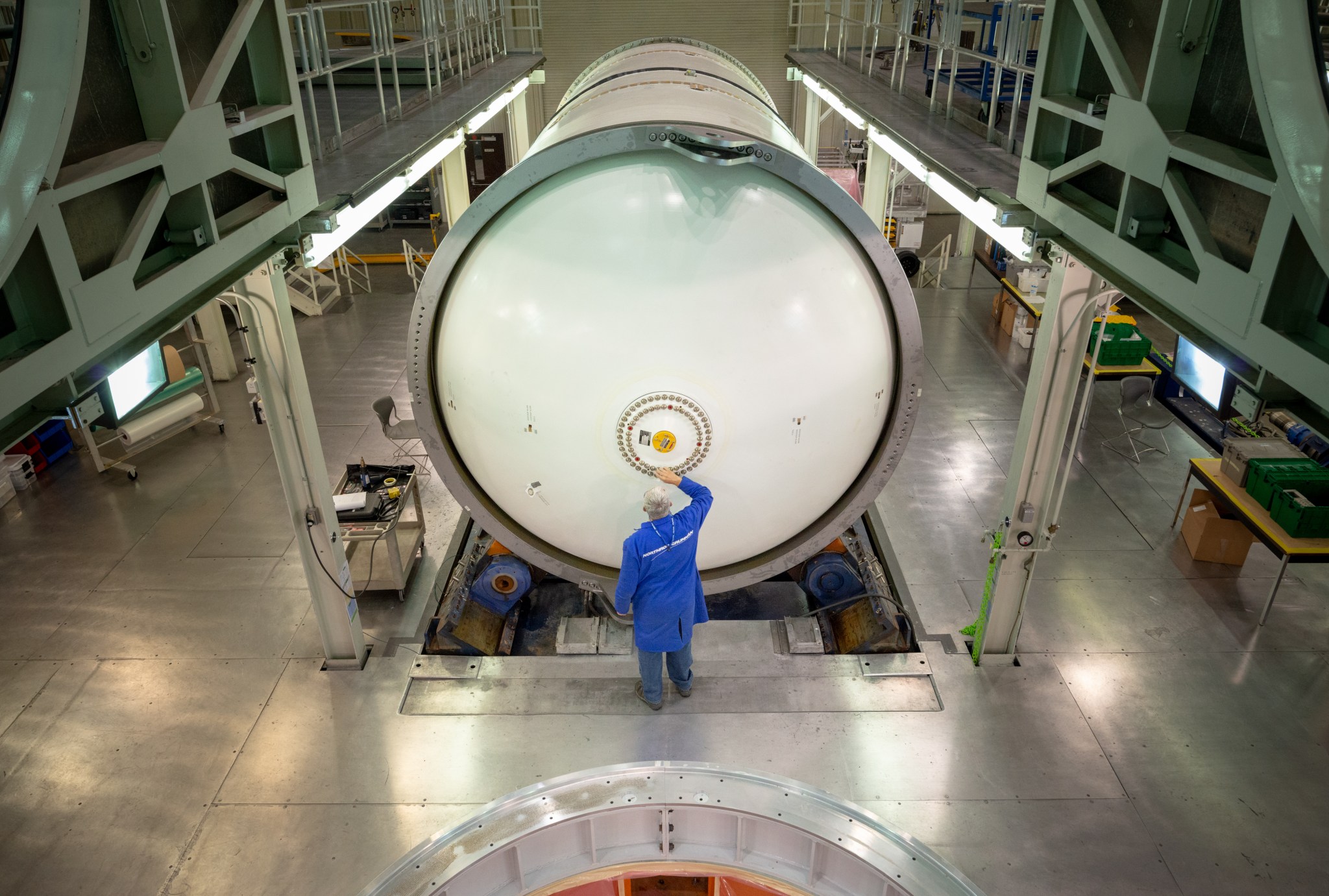
NASA is working to send American astronauts to the Moon by 2024. SLS and the Orion, along with the lunar Gateway, are the backbone for deep space exploration. SLS and Orion will launch from NASA’s Kennedy Space Center in Florida on missions to the Gateway in lunar orbit. NASA is targeting 2022 to test SLS with astronauts aboard the Orion spacecraft. Credits: Northrop Grumman Photo
NASA and Northrop Grumman technicians in Promontory, Utah, completed casting, or filling with propellant, all 10 of the booster motor segments for the second flight of NASA’s Space Launch System rocket, Artemis 2, on July 8. The twin, five-segment boosters flank the SLS rocket on either side. Each produces a maximum thrust of 3.6 million pounds, or nearly 80% of the thrust at liftoff and into the first two minutes of flight, to help send NASA’s Orion spacecraft and astronauts to the Moon. At 17 stories tall, the boosters for SLS are the largest, most powerful solid propellant boosters ever built for flight. (Northrop Grumman)
NASA Stennis Uses SLS Core Stage Pathfinder to Prepare for Green Run Test Series
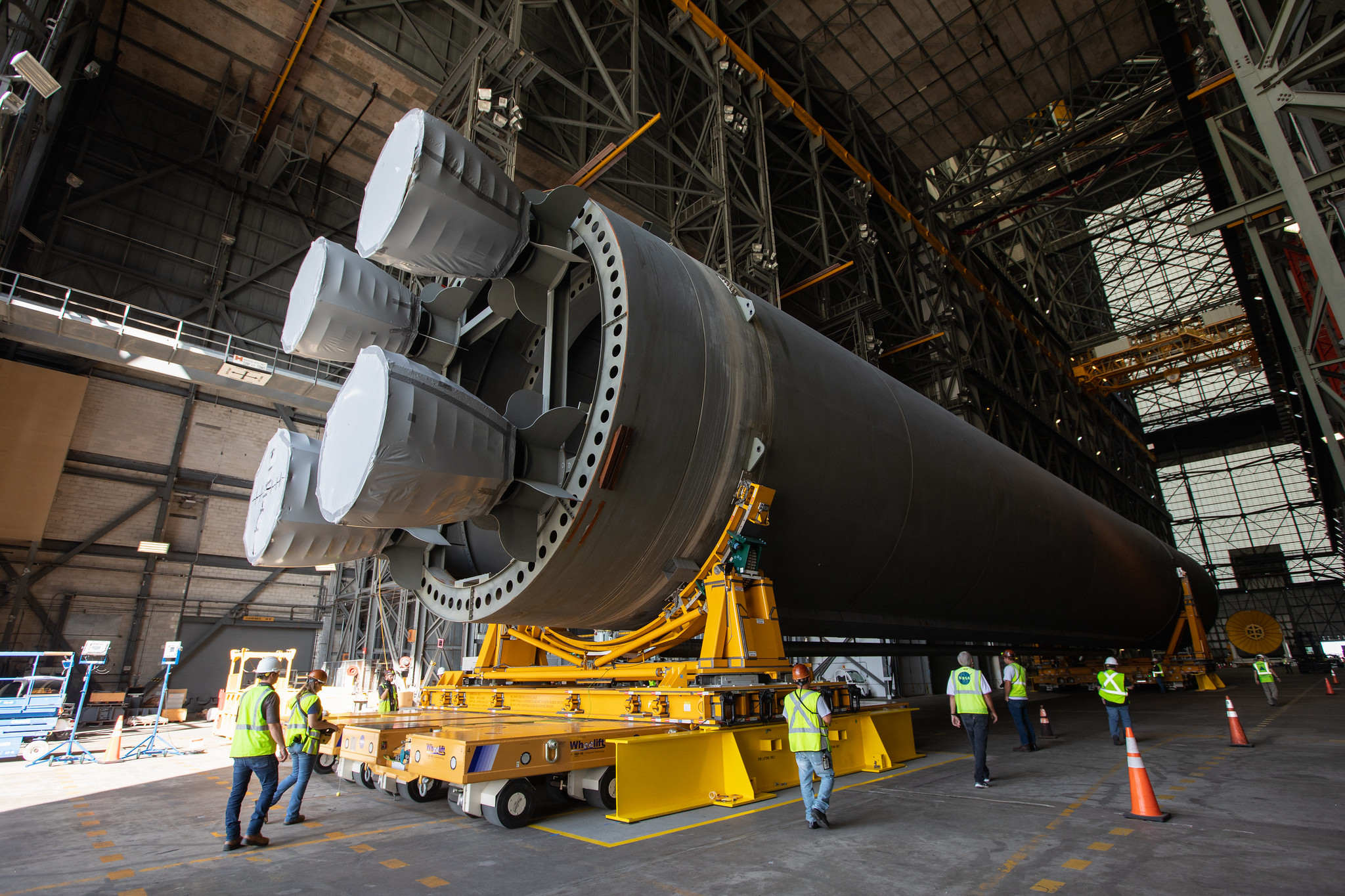
NASA crews at Stennis Space Center clear a milestone in preparation for Green Run testing of the Space Launch System core stage — lift and installation practice techniques of the core stage pathfinder into the B-2 Test Stand on Aug. 23 and 24. The pathfinder is the same size and weight as the actual core stage, which will be delivered to Stennis from NASA’s Michoud Assembly Facility for Green Run testing in 2020. Next, the pathfinder will be delivered by NASA’s barge Pegasus to NASA’s Kennedy Space Center, where it will be used for stacking and lift practice techniques in the Vertical Assembly Building. (NASA)
Payload Operations Integration Center Reshaping Workforce
By Macie Morgan
The workforce in the Payload Operations Integration Center at NASA’s Marshall Space Flight Center is being reshaped to support an increased number of crew aboard the International Space Station, which has essentially doubled the amount of science research conducted.
More science means more flight controllers are needed to help manage science investigations. The POIC supports all science investigations on the station.
Training for work in the POIC begins with an eight-week payload academy, where the basics of space station and other soft skills are taught. Upon completion of payload academy, an oral exam is given in order for trainees to move on to position-specific training that includes coursework, commanding, simulations and on-the-job training.
Following the training phase, individuals are nominated for certification on-the-job training, during which the individual performs the responsibilities and duties of their specific flight controller position while being evaluated by a certified discipline evaluator. At the end of the certification on-the-job training, the certified discipline evaluator and the payload operations director announce the certification of POIC’s newest flight controller. The entire training process takes eight months to a year to complete.
This year, 41 individuals have been certified to perform critical functions that maximize science return on orbit. Three members of the flight control team recently completed training to earn certifications.
Erek Allen certified as a payload operations director for the space station. He and his colleagues lead a ground control team performing science operations aboard the orbiting laboratory. Prior to joining the POD office, Allen held certifications as a space station specialist operations controller, the first to certify within the position in 2017, and an operations controller, certified since 2014. Allen joined Marshall in 2009 as a cooperative education student, gaining experience in the Engineering Cost Office, Propulsion Business Resource Office, Science & Space Technology Projects Office and the station’s Planning, Operations and Analysis Branch.
Allen holds a bachelor’s degree in industrial and systems engineering from Mississippi State University in Starkville, and a master’s degree in engineering management from the University of Louisville. Born in Denver, Colorado, he considers Tupelo, Mississippi, his hometown.
Geof Morris certified as a payload operations director. Morris has held several positions in the POIC; he was certified as a payload rack officer in 2015, as a microgravity science glovebox specialist and a Materials Science Research Rack-1 Facility Operations lead. He joined the Operations Director Office in April 2018 and he was certified as a space station payload operations director in December 2018.
Morris was born in Knoxville, Tennessee. He received a bachelor’s degree in engineering from the University of Alabama in Huntsville.
Haleigh Sisson certified as a data management coordinator. She works directly with payload developers to process and maintain scientific experiments in low-Earth orbit aboard the International Space Station. Sisson is a member of one of only two flight control positions that send commands to the station from the control room at the POIC. Sisson coordinates data and video activities with flight controllers at the Mission Control Center at NASA’s Johnson Space Center, the European Space Agency and the Japan Aerospace Exploration Agency. A native of Hoover, Alabama, Sisson earned a bachelor’s degree in civil engineering from the University of Alabama in Birmingham.
Morgan, a volunteer summer intern at Marshall, supports the Office of Strategic Analysis & Communications.
Competition Open: New Challenges Await 2019-20 NASA Student Launch Teams
By Will Bryan
As the new school year begins, so does the 20th year of NASA’s Student Launch competition, an annual program that challenges middle school, high school and college students from around the country to design, build and test a rocket and payload.
The competition’s handbook, released Aug. 22, provides guidelines for proposals as well as rules for the entire competition, including the new payload challenge for the college division. Interested student teams must submit their proposals by 3 p.m. CDT Sept. 18.
“This year, we are giving the college and university teams the specific objective to recover simulated lunar ice. The approach they use to accomplish the goal is up to them,” said Katie Wallace, Student Launch program manager at NASA’s Marshall Space Flight Center. “The new challenge resembles the real-world scenario engineers and scientists face when determining the best way to collect samples — whether for use by astronauts on the Moon or for scientific study.”
On launch day in April 2020, each team’s payload will ride aboard their rocket to between 4,000 and 5,500 feet. The payload, which may deploy before or after the rocket safely lands under parachutes, will travel to one of five sample sites, collect and store at least 10 milliliters of simulated ice and then travel at least 10 feet away from the site.
In past years, teams in the college division were given different payload options they could choose to develop — such as a rover or an unmanned aerial vehicle — instead of an objective to complete.
Teams competing in the middle/high school division can attempt the new sample retrieval challenge or propose to conduct a scientific or engineering experiment of their own creation. In last year’s competition, the St. Vincent-St. Mary’s High School team from Akron, Ohio, flew a magnetically levitated payload to investigate alternate methods of safely delivering fragile payloads into space.
The altitude rules introduced in the 2018-2019 competition remain unchanged. When teams submit their preliminary design review package — one of many documentation and presentation milestones throughout the eight-month competition year — they will “call their shot” and declare how high they will fly on launch day. The team in each division closest to their projected altitude will win the altitude award. Last year’s winner in the college division missed their target altitude by just 12 feet.
Teams are evaluated and given points and awards in nearly a dozen other categories, including safety, vehicle design, social media presence and STEM engagement. The Science, Technology, Engineering and Mathematics Engagement Award encourages and recognizes the teams for sharing their knowledge and experiences with the next generation of engineers, scientists and explorers.
Entering its third decade of competition, Student Launch provides a realistic experience for students to follow the engineering design process NASA and industry engineers use when developing and operating new hardware.
Marshall’s Office of STEM Engagement manages Student Launch to stimulate innovation and advance NASA’s mission through collaboration with educational institutions and students — the Artemis generation who will help us explore the Moon and Mars. The office also furthers NASA’s goal of attracting and encouraging students to pursue degrees and careers in the STEM fields. NASA’s Human Exploration and Operations Mission Directorate and the Office of STEM Engagement, as well as Northrop Grumman and the Huntsville chapter of the National Space Club, provide funding and leadership for the initiative.
Bryan, an ASRC Federal/Analytical Services employee, supports the Office of Strategic Analysis & Communications.
NASA, Peanuts Partnership Featured in Special Space-Themed Collection
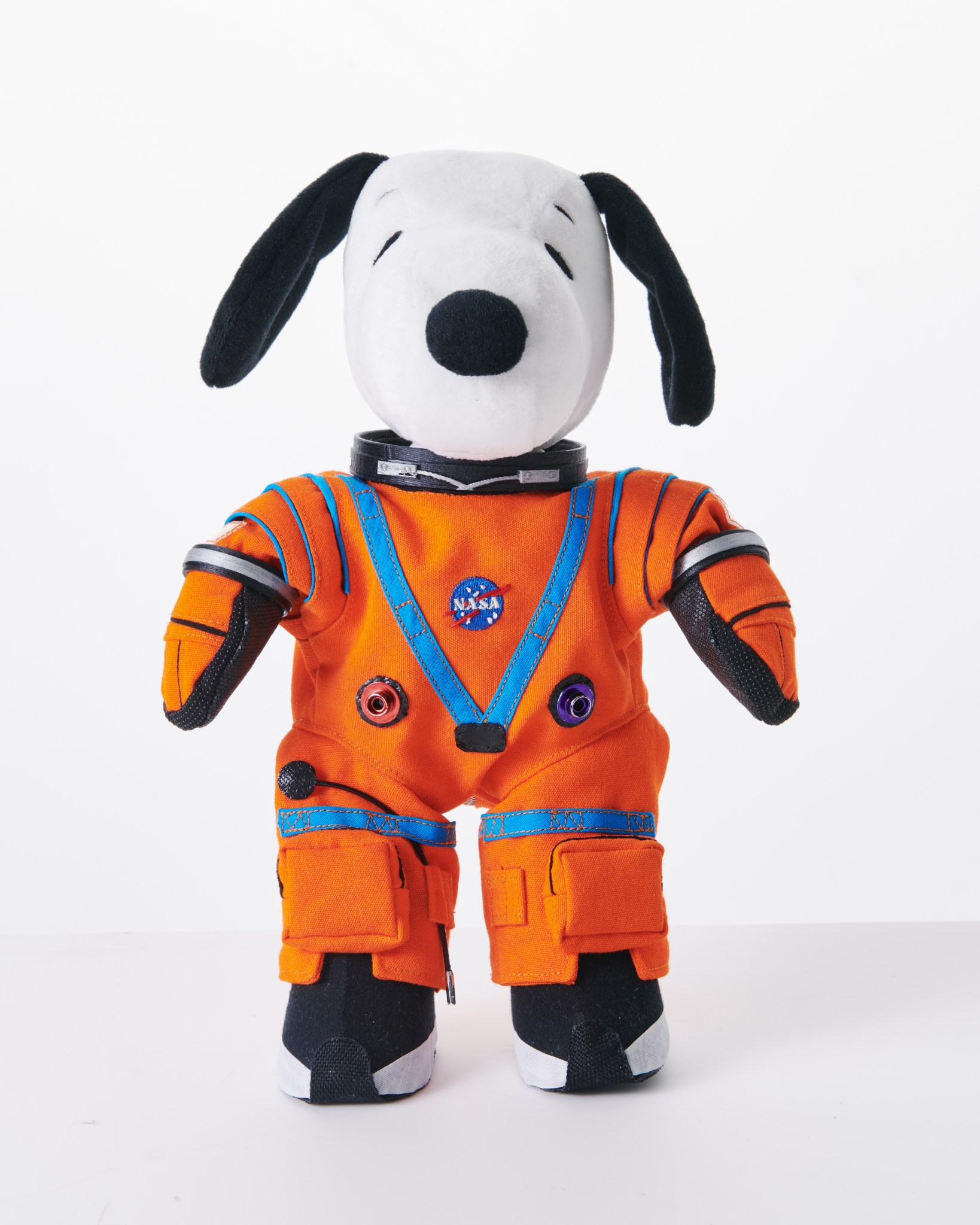
Have you seen the Astronaut Snoopy toys? NASA and Peanuts Worldwide partnered in 2018 to develop a series of educational activities to spur interest in science, technology, engineering and math among young explorers in the Artemis Generation. McDonald’s and Peanuts partnered to create space-themed toys and STEM-focused books featuring Snoopy in McDonald’s Happy Meals. In the United States, there are four toys and four STEM-related books showcasing technology and systems that NASA developed for human spaceflight and science missions. NASA employees and contractors who purchase a Happy Meal and receive a toy or book can share an image on social media using the hashtag #AstronautSnoopy. Toys and books are available through mid-September in the United States. (NASA)
This Week in NASA History: 5th RS-25 Flight Controller Hot-Fire – Aug. 30, 2017
This week in 2017, NASA concluded a successful summer of hot fire testing for flight controllers on RS-25 engines that will power the core stage of NASA’S Space Launch System. The flight controller serves as the “brain” of the engine, communicating with SLS flight computers to ensure engines are performing at needed levels. During tests, the controllers are installed on a developmental RS-25 engine, which is then fired in the same manner and for the same duration that will be needed during an SLS launch. The flight controller tests are critical in preparation for upcoming SLS flights to deep space. Here, the fifth RS-25 engine flight controller unit is tested on the A-1 Test Stand at NASA’s Stennis Space Center for a 500-second duration. All the flight controllers for the first four SLS missions have completed testing, and the engines for the Artemis 1 lunar mission are ready for flight. Today, NASA’s Marshall Space Flight Center is playing a vital role in the Artemis program by developing the SLS, the backbone of NASA’s exploration plans and the only rocket capable of sending humans to the Moon and Mars. The NASA History Program is responsible for generating, disseminating and preserving NASA’s remarkable history and providing a comprehensive understanding of the institutional, cultural, social, political, economic, technological and scientific aspects of NASA’s activities in aeronautics and space. For more pictures like this one and to connect to NASA’s history, visit the Marshall History Program’s webpage. (NASA)

